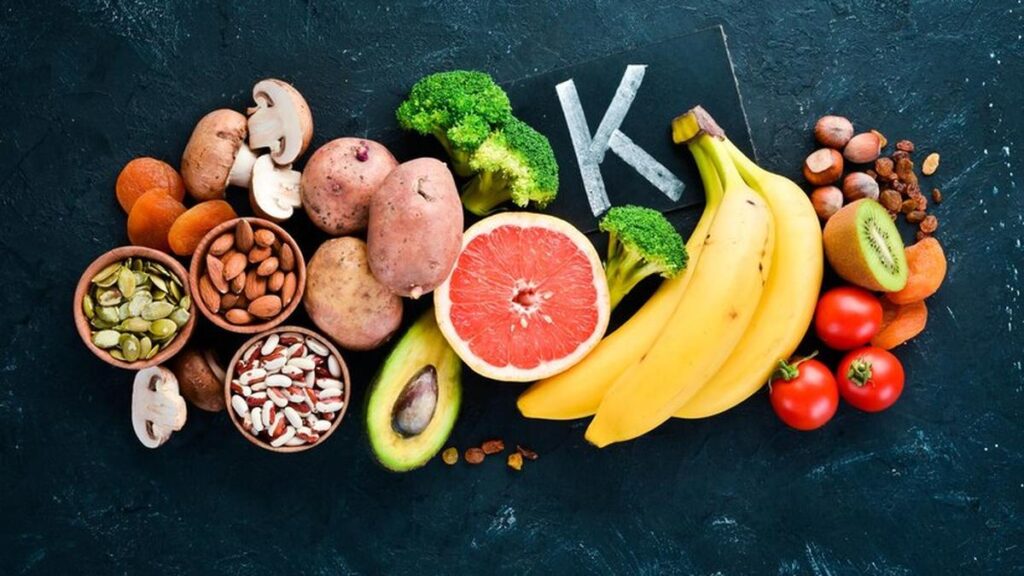
The amount of potassium needed also varies, depending on age and gender. For adult men and women (19 years and above), the recommended intake is 3.4 g and 2.6 g, respectively. Photograph used for representational purposes only
People pay far more attention today than they used to, about what they put on their plates. For many, food is not just a source of sustenance; it is a lifestyle. Be it a hearty spinach salad or greasy French fries, what people consume every day defines their health. While there is significant awareness about several micronutrients, including vitamin A, vitamin C, vitamin D, iron, and calcium, a potent mineral that does not get as much attention is potassium.
Potassium is an electrolyte, or a substance that carries an electrical charge when dissolved in a liquid like blood. It plays a supportive role in several functions such as nerve signalling, contraction and relaxation of muscles, cellular metabolism, and blood pressure modulation. It can also prevent kidney stones, enhance muscle health, and maintain bone health by preventing too much calcium from leaving the body through urine. Maintaining ideal levels of potassium in the body, especially for patients with chronic kidney disease (CKD), is important for staying healthy and preventing complications. Excess potassium can lead to a condition called hyperkalaemia, and hence, diet regulation is important.

How much potassium does the body contain and need?
The human body contains between approximately 40 and 50 mmol of potassium for every kilogram. The total amount depends on how muscular the person is, as 90% to 95% of potassium is found within the cells of the muscles and bones. Most of the potassium consumed (80%-90%) is excreted through urine, and the rest through sweat and stools.
The amount of potassium needed also varies, depending on age and gender. For adult men and women (19 years and above), the recommended intake is 3.4 g and 2.6 g, respectively. However, this needs to be adjusted in patients with Chronic Kidney Disease (CKD) or any other conditions that affect potassium excretion.
What foods are rich in potassium?
Some foods rich in potassium include: fruits such as oranges, bananas, honeydew, cantaloupes, grapefruit, apricots, and some dried fruits such as raisins, dates, and prunes; vegetables such as broccoli, spinach, mushrooms, cucumbers, peas, zucchini, leafy greens, pumpkins, potatoes, and sweet potatoes; juices of tomato, orange,apricots, prunes, and grapefruits; dairy products likemilk and yogurt; fishincluding cod, trout, tuna, halibut, and rockfish; meats such as chicken, beef, and turkey; kidney beans, soybeans, lima beans, pinto beans; lentils;almonds, cashews, peanuts, and walnuts, as well as brown and wild rice and whole grains

What happens when there is too much potassium?
Hyperkalaemia is a condition that occurs when excessive amounts of potassium accumulate in the blood. The most common reasons for this are a diet with too much potassium, CKD, and certain medications. Without timely intervention, it can result in life-threatening heart problems. The symptoms vary based on the severity. Mild hyperkalaemia causes non-specific signs such as numbness, muscle weakness, nausea, and tingling. If the levels are extremely high, it can cause shortness of breath, chest pain, heart palpitations, or vomiting, and patients require emergency care.
Since potassium-rich foods are beneficial for the heart, in patients prone to hyperkalaemia, it is important to consider other measures, such as potassium binders that attach excess potassium to stools rather than a low-potassium diet. This approach ensures patients receive adequate nutrition while maintaining potassium levels.
Patients must undergo regular checkups and consult a nutritionist to create a tailored diet that balances the benefits and risks of potassium while considering treatment options to ensure they receive heart-healthy foods. Other than potassium binders, treatment options for hyperkalaemia include diuretics to encourage urination, medication management, intravenous therapy to protect the heart, and dialysis.

A mindful approach
Potassium is an indispensable component of health due to its beneficial impact on the heart, nerves, and kidneys. However, being mindful of how much is consumed is key, especially in patients with CKD. By being aware and following a structured diet along with the right medication, patients can gain optimal benefits from this essential mineral without suffering from any complications. Diet has always been central in promoting health and well-being, and following these proactive strategies can benefit people in the long run.
(Dr. N. Gopalakrishnan is Member Secretary, Transplant Authority of Tamil Nadu. [email protected])
Published – June 09, 2025 04:03 pm IST

